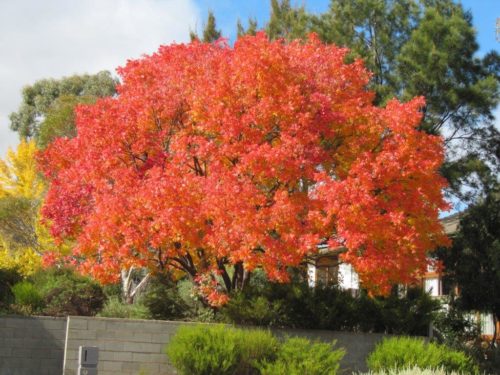
“We can grow a greater range of fruit trees, berries and edible crops than almost anywhere else in Australia,” says gardening writer CEDRIC BRYANT.
CANBERRA’S climate is great for gardening, with its distinct seasons and the wide range of plants that grow here.
We can grow a greater range of fruit trees, berries and edible crops than almost anywhere else in Australia.

The average annual rainfall in Canberra is 619mm, with the starting figure for evaporation of 1800mm; the latter mainly in summer. Temperatures range from 35C+ in summer down to -5C in winter, at times both hotter and colder. If moving into a new home, I’d suggest not making any dramatic changes to the garden. Observe it for three to six months, and see what flowers first or which trees may need attention.
Wattles in full bloom announce the arrival of spring in September; along with many other native plants. It’s a good time to visit the Australian National Botanic Gardens. Fruit trees, generally potted, will still be in abundance in garden centres. Apples, pears, plums and most berry fruits can be planted now, before the heat of summer. Spring is blossom time for the wonderful flowering crabapples, cherries, pears and plums. Then we have bursting forth the rhododendrons, azaleas and magnolias. The selection of perennial plants that grow here is amazing, with many flowering from now through summer and into autumn.
In October, the first of the early flowering clematis will appear. This is the time of surprises of buying an existing garden, when bulbs start to appear. It’s also the time of the Floriade spring festival. Hopefully the worst of the frosts will be over, and citrus such as lemons, limes and cumquats will appear. Unfortunately oranges do not generally do well here; they need longer, hot summers such as in the Riverina. Roses also start to flower.
By November it’s time to plant tomatoes, plus a wide range of summer veggies. December, except for regular watering is one of the quietest times in the garden during Christmas/New Year and holidays. One of my highlights at this time is the fragrance of daphne in the garden.
January and February, the hottest months when watering cannot be neglected. Dead-heading flowering roses is important at this time to provide continuous flowering into autumn. Generally planting is not recommended until autumn; it being mainly a maintenance period.

March and April are one of the most beautiful times of the year, when Canberra comes into its own. The deciduous trees as the leaves change into their rich autumnal colours are a sight to behold. Especially when viewed from the lookouts on Mount Ainslie or Black Mountain.
Autumn is equal to spring for flowering trees and shrubs, with crepe myrtles, hibiscus and a bevy of perennials coming into their own; Michaelmas daisies, salvias and belladonna lilies, to name a few. Autumn is planting time; the heat of summer has passed. The ground is still warm without the searing heat and blasting hot winds.
Then comes winter, time to plant all deciduous ornamental trees, fruit trees and roses.
Who can be trusted?
In a world of spin and confusion, there’s never been a more important time to support independent journalism in Canberra.
If you trust our work online and want to enforce the power of independent voices, I invite you to make a small contribution.
Every dollar of support is invested back into our journalism to help keep citynews.com.au strong and free.
Thank you,
Ian Meikle, editor




Leave a Reply